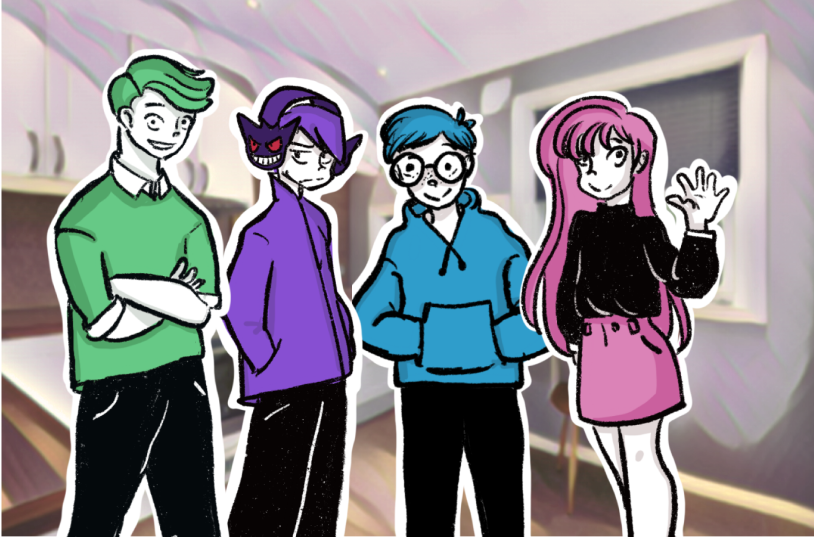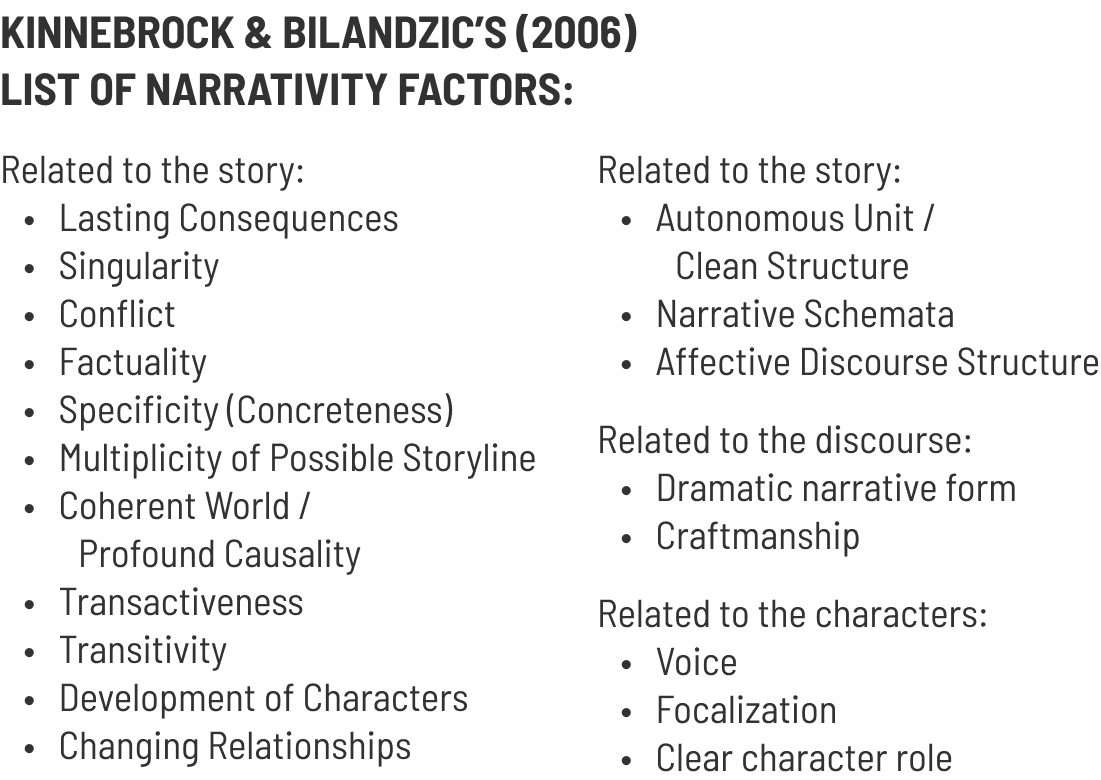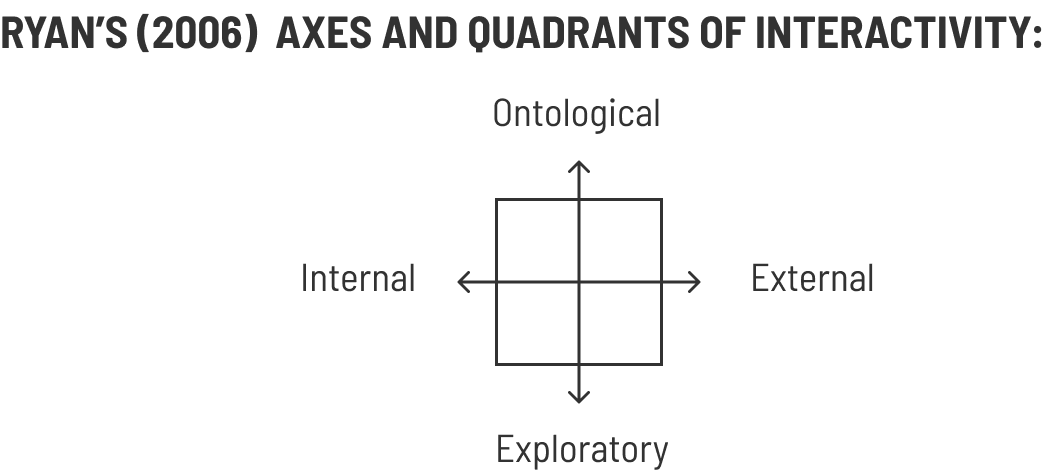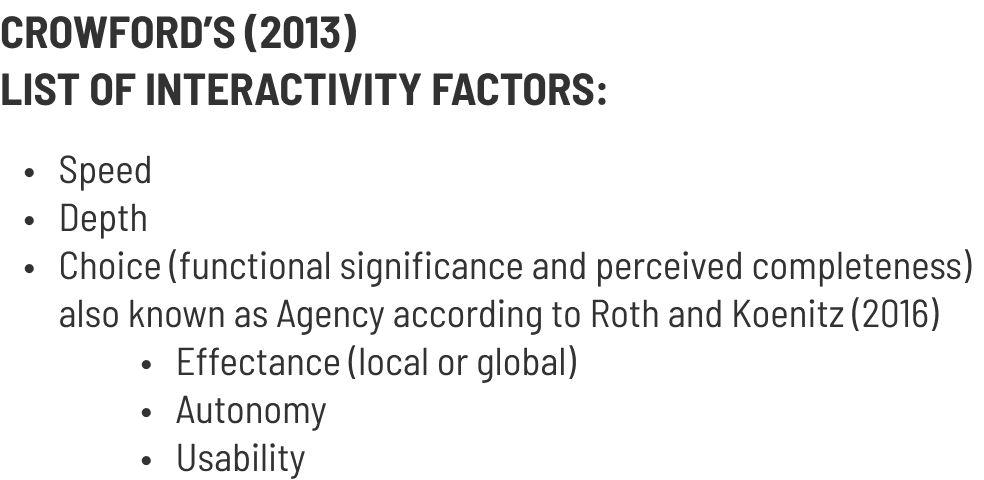02 Fragile:
Interactive Storytelling about mental health
Fragile is an Interactive Digital Narrative (IDN). It focuses on mental health and aims to teach young adults how to recognize signs of mental illnesses in loved ones and how to act in a given situation. The story offers an in-depth exploration of genuine human social relationships. It resembles real-life situations and interactions, as it’s based on real-life stories and interviews. The IDN was constructed around the various factors that enable narrativity, interactivity, and narrative engagement. Eventually, Fragile expects to have several intended communicative and behavioral effects that are aimed at our target group of young adults.
Student Project (in group)
Interactive Storytelling Class
MSc New Media Design
at Tilburg University
3 months (2022)
UX Writing
UI Design

Fragile immerses the reader in a group of friends, one of whom is dealing with depression. They discover that one of their friends has anonymously been posting on social media about their struggles. During a birthday party, they discover that other friends have their own issues. The interactor’s goal is to figure out who the person from the social media post is while navigating through the course of the story. At some point in the story, they will decide, if, and how, they can help their friend.
Disclaimer: This article contains spoilers from the narrative. If you do not wish to get spoiled, I invite you to read the interactive story first.

The IDN was created to provide harmony between narrativity and interactivity. Narrativity was enhanced according to Kinnebrock & Bilandzic’s [1] list of narrative factors, while interactivity was brought based on the interactivity axes established by Ryan [2], and the factors affecting the degree of interactivity in storytelling according to Crowford [3].
1. Narrativity factors
The course of the story offers a clear, coherent structure. It is constructed in such a way that regardless of the path the interactor chooses, they will still obtain insightful information about mental health (such as common symptoms people experience), also improving the aspect of replayability. Various educational nudges and unforeseen events (such as the scene in which Megan’s scars are discovered) make the narrative impactful and relevant to the overall storyline. This in turn provides lasting consequences. An additional relevant factor, specificity, is given through the specificity of location and time of events. Further strengthening the aspect of narrativity and enhancing realism, the use of round characters is applied. The narrative is unfolded in the form of an intradiegetic narrator (e.g.; “I have read that…”). The answers to dialogues are written in first person and the interactor is present throughout the whole story. The interactor experiences the story from an internal focalization standpoint, one is given insight into the characters’ inner perception of feelings and thoughts (e.g., “I’m not feeling well at all”), magnifying the narrativity. The characters all have their own story to tell (e.g. Alex: burn-out), adding to the overall verisimilitude and significance of the story.

2. Interactivity factors
This narrative is situated on the exploratory axis of interactivity established by Ryan [2]. The narrative uses a linear storyline with side branches such as the stories of the additional characters. Hence, the interactor always returns to the inevitable ending. Ultimately, this foldback structure gives the interactor the illusion of agency. The interactor navigates inside the story but cannot affect its ending. Actions taken by the interactor are based on intrinsic motivational factors, resulting in high effectance and making the story more meaningful to the interactor. In some instances, actions with local effectance were also enforced (e.g.: the initial choice of whether to check up on Megan or the other characters). Global effectance is achieved through the build-up of different decisions made by the interactor throughout the narrative with their effects then being revealed at the end. When prompted to make a decision, the pointers are not nudging toward a specific choice so the notion of autonomy is pertained throughout the narrative. However, as the aim of the narrative is to educate interactors on how to react in the given situation, some options, such as the choice to ignore Megan, are disregarded, simultaneously dialing down the factor of perceived completeness as the number of realistic plausible options is also impacted. The story offers an in-depth exploration of a depiction of real human social relationships. It resembles real-life situations and interactions as it’s based on real-life stories and interviews, a vital component of interactivity.


Bilandzic and Busselle [4] posited three constructs of a narrative experience: transportation, narrative engagement, and story world absorption. The three narrative constructs allowed the interactor to holistically experience the IDN with a satisfying narrative experience.

1. Narrative Engagement Factors
The narrative engagement was built around these four factors [5]: attentional focus, emotional engagement, narrative understanding, and narrative presence. The IDN was constructed with the least amount of distraction possible, utilizing existing user interfaces and usability best practices that the target audience may be familiar with (e.g., visual novels, video games), to let the interactors focus solely on the narrative. As the IDN aimed to educate on how to take action to help a friend with depression, the use of emotional engagement is particularly emphasized to make the interactor feel empathy or sympathy for the main character’s friends - as if they were the interactor’s actual friends. This was achieved through verisimilitude, by creating believable fictional characters with plausible backstories (e.g.; a friend experiencing burnout), and through the interactivity factors of depth and perceived completeness, which enhances the perceived realism (particularly external realism) and believability of the characters, which might induce higher emotional engagement. Through a deictic shift, the interactor should be able to understand the motivation and actions of the characters from the perspective of the main character. As the IDN was constructed in such a way that the main character does not know the mystery person who is having difficulties, the IDN attempted to solve the ‘loss of memory’ problem (i.e. where the interactor has a lacking mental model understanding of the storyworld), which could have hindered narrative understanding when the interactor first started the IDN. Ultimately, as a result of enabled identification and narrative comprehension, the IDN should have afforded an immersive narrative experience where the interactor feels present in the narrative world.
2. Transportation Factors
Transportation was made possible thanks to a deictic shift through the intradiegetic view and internal focalization. It allowed the interactors to position themselves within the mental models of the narrative, to have both cognitive and affective identification of the storyworld in the same way as the main character. This deictic shift enabled identification, which in turn enabled narrative comprehension. Through the specificity of time and space and the use of vivid and concrete language (e.g., “I just want the pain to stop. It’s the only way.”), the IDN provided affordances for the interactor to create vivid images of the storyworld. Overall, the IDN was able to induce identification and mental imagery within the interactor that made transportation possible.
3. Storyworld Absorption Factors
Lastly, storyworld absorption comprises four dimensions: attention, emotional engagement, mental imagery, and transportation into the storyworld [6]. All of the elements have been addressed above as attentional focus, emotional engagement, mental imagery, and transportation. Arguably the IDN was able to provide a sufficient storyworld absorption.
Fragile has several intended communicative and behavioral effects that are aimed at our target group of young adults. This group is known specifically for not always seeking help when dealing with mental health issues. To tackle this crisis, the IDN aimed to let the interactor leave the storyworld with the take-home message that mental health issues are hardly ever visible and that anybody could be struggling.
When you will go through the IDN, you will discover how to identify signals of mental health issues and you will learn how to take action to help them. When you finish the story, you will believe that reaching out to a friend who is having difficulties might do some good. Even though it feels uncomfortable, you would have the intention to check on your loved ones more often. In addition, by empathizing with the characters in the IDN, you are expected to feel more moved in real life, like if one of your friends is struggling with mental health.
Ultimately, the behavioral goal of the IDN is for the target audience to check on their friends, show up, listen, and support their friends who are struggling. Holistically, the aforementioned communicative goals should provide enough information for the interactor to perform the behavioral goals intended by the IDN.

In the end, the team and I were proud of the final project as mental health is an important subject in our modern society. The project received good feedback from our peers. The main reaction was that it was a very relevant topic to tackle and that even if some knew about the struggles with mental health, Fragile created some empathy. If more people were exposed to this type of IDN, it could help a great number of people struggling with mental health.
If we were to develop the project more, more testimonials could be collected and psychologists could join the team to intensify the verisimilitude. More chapters or stories could be created according to different testimonies and more elaborate storytelling could increase the narrative engagement of the readers.
If you are more interested in the development of Fragile, I invite you to message me to read the entire article, which describes all the factors in more details.

[1] Kinnebrock, S., & Bilandzic, H. (2006). How to make a story work: Introducing the concept of narrativity into narrative persuasion. International Communication Association Conference, Dresden.
[2] Ryan, M. L. (2006). Avatars of story (Ser. Electronic mediations, v. 17). University of Minnesota Press.
[3] Crawford, C. (2013). Chris Crawford on interactive storytelling (Second, Ser. New riders games). New Riders.
[4] Bilandzic, H., & Busselle, R. (2017). Beyond metaphors and traditions. Exploring the conceptual boundaries of narrative engagement. In F. Hakemulder et al. (Eds.), Narrative absorption (pp.11-27). Benjamins.
[5] Busselle, R., & Bilandzic, H. (2009, November 23). Measuring Narrative Engagement. Media Psychology, 12(4), 321–347. https://doi.org/10.1080/15213260903287259
[6] Kuijpers, M. M., Hakemulder, F., Tan, E. S., & Doicaru, M. M. (2014, September 22). Exploring absorbing reading experiences. Scientific Study of Literature, 4(1), 89–122. https://doi.org/10.1075/ssol.4.1.05kui
Special thanks to my classmates with whom I completed this project: Rumittar Rosere Maria, Poulami Singha Roy, Debbie Schoone, and Nafisa H.S.O.K. Umar